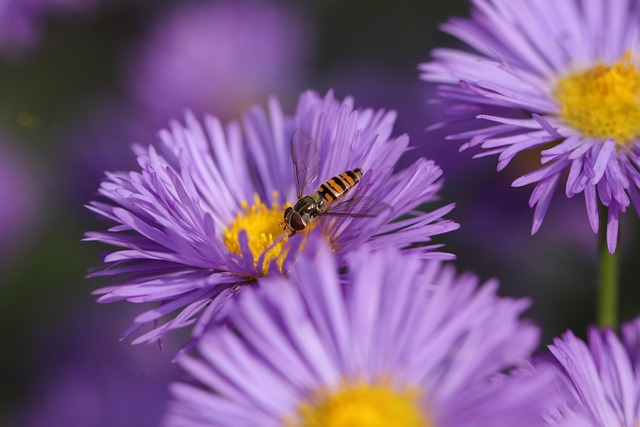Stink bugs, drawn by warmth and CO2, invade homes in cooler months seeking food. Eco-friendly solutions involve sealing entry points, maintaining cleanliness, using natural repellents like cinnamon & mint oil, regular inspection, landscaping with daisy/aster plants, and caulking gaps. Herbs like mint, lavender, and rosemary, essential oils, vinegar sprays, and crushed garlic deter them naturally. A multi-pronged approach combining seasonal care and habitat modification ensures long-term management without chemicals.
Stink bugs are a common pest, known for their unpleasant odor and damaging habits. Learn how to reduce attractants with our comprehensive guide on eco-friendly stink bug solutions. Understanding these insects’ behavior and diet is key to effective prevention. We explore natural deterrents, home remedies, and long-term management strategies like seasonal care and habitat modification. Implement these eco-conscious tactics to minimize stink bug infestations and protect your space.
Understanding Stink Bugs: Behavior and Diet
Stink bugs are notorious for their ability to infiltrate homes and cause a nuisance. Understanding their behavior and diet is crucial when it comes to developing effective, eco-friendly stink bug solutions. These insects feed on plant juices, primarily from fruits, vegetables, and other crops in outdoor settings. Once they sense warmth and carbon dioxide, stink bugs migrate indoors during the cooler months, seeking shelter and potential food sources. Their preference for warm environments makes them particularly active in homes during autumn and winter.
By recognizing their dietary preferences, homeowners can take proactive measures to reduce attractants. This includes sealing entry points, maintaining a clean environment, and storing produce properly. Eco-friendly solutions involve using natural repellents like cinnamon or mint oil, which stink bugs find unpleasant. Regular cleaning and inspection of homes can also help identify and eliminate potential habitats, further deterring these pests from entering indoor spaces.
Eco-Friendly Prevention Strategies
Stink bugs are attracted to certain plants, so one of the most effective eco-friendly prevention strategies is to alter your landscaping. Opt for plant species that aren’t known hosts for stink bugs, such as those in the daisy or aster family, which tend to repel them. Additionally, maintain a clean and clutter-free environment, especially indoors, as these insects are drawn to hidden spaces. Regularly vacuum and dust to remove any stink bug hiding spots.
Using natural repellents can also help keep stink bugs at bay. For example, planting citronella, lavender, or marigolds around your home can create a scent barrier that discourages these pests. Furthermore, sealing cracks and gaps in walls, doors, and windows with caulk is an essential step to prevent their entry. These eco-friendly solutions not only reduce stink bug attractants but also promote a healthier, more sustainable living environment.
Natural Repellents and Home Remedies
Many homeowners seek eco-friendly stink bug solutions, opting for natural repellents and home remedies as alternatives to harsh chemicals. Herbs and essential oils like mint, lavender, and rosemary are known to deter these pests naturally. Planting these around your property can create a protective barrier against stink bugs without causing harm to the environment or other beneficial insects.
Simple home remedies include using vinegar and water sprays, as the strong scent can repel stink bugs. Crushed garlic and pepper mixed with water is another effective solution. These natural methods not only reduce the attractants but also offer a safer, more sustainable approach to pest control, making them popular choices for those prioritizing eco-friendly practices.
Long-Term Management: Seasonal Care and Habitat Modification
To implement long-term management for stink bugs, consider seasonal care and habitat modification. During the fall, when stink bugs start to seek shelter for the winter, seal any gaps or cracks in your home’s exterior using caulk or weatherstripping. This simple step significantly reduces their entry points. Additionally, maintaining a clean and clutter-free environment, especially in areas where stink bugs breed, such as near plants or in dark, secluded spaces, can deter them from settling in.
For eco-friendly stink bug solutions, focus on natural predators like ladybugs and spiders. Planting aromatic herbs like lavender, mint, and basil around your property can also repel these pests naturally. Regularly trimming trees and shrubs keeps their habitats less inviting. Moreover, using yellow sticky traps strategically placed near entry points can help monitor and reduce stink bug populations without resorting to chemical treatments.
Stink bugs are a persistent pest, but with a multi-faceted approach using eco-friendly stink bug solutions, you can effectively manage their presence. By understanding their behavior and implementing natural prevention strategies, repellents, and habitat modifications, homeowners can create an environment less appealing to these insects. Adopting these long-term management practices ensures a more peaceful living space, free from the nuisance of stink bugs, while also preserving the balance of our ecosystems.
